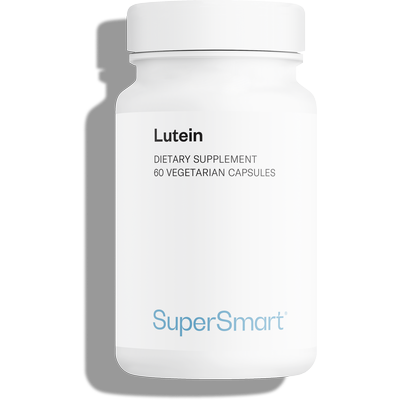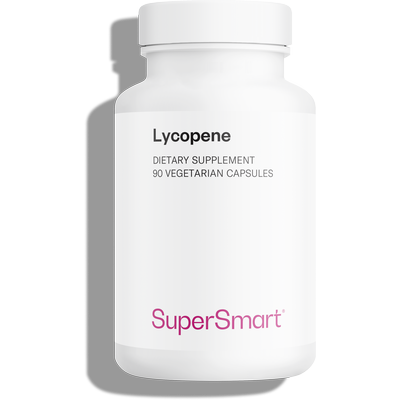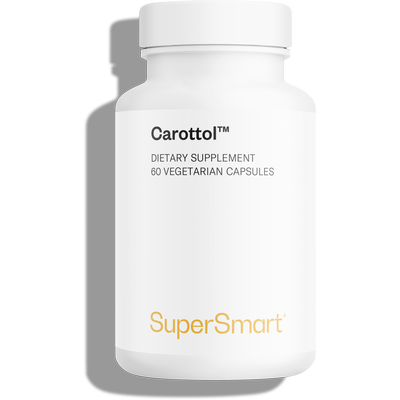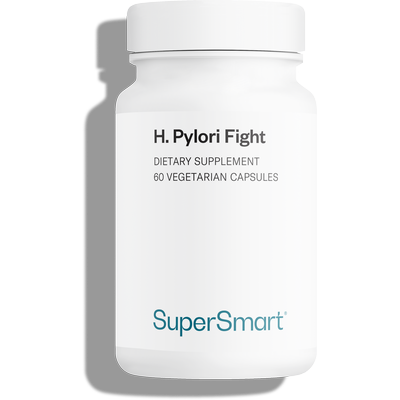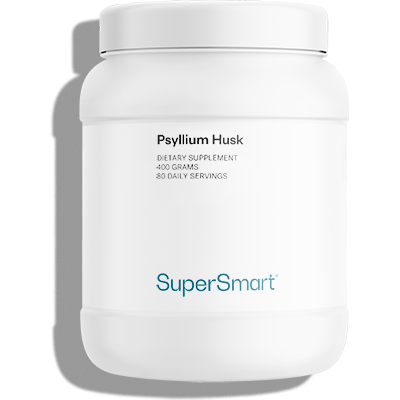13 simple and effective measures which could prevent 4 out of 10 cancers
 More than 5 million cases of cancer could be prevented each year by adopting 13 simple and effective measures, according to a study published in the British Journal of Cancer. According to the study’s authors, these measures should be promoted as part of public health policy to drastically reduce the number of cancer cases diagnosed each year – especially as some of them are relatively unknown by the general public …
More than 5 million cases of cancer could be prevented each year by adopting 13 simple and effective measures, according to a study published in the British Journal of Cancer. According to the study’s authors, these measures should be promoted as part of public health policy to drastically reduce the number of cancer cases diagnosed each year – especially as some of them are relatively unknown by the general public …
1) Stop smoking
Smoking remains top of the list of risk factors for cancer. It does seem that preventive measures are starting to work as numbers of smokers are slowly declining in the West. It must be said that the risks of developing cancer from tobacco are considerable: 10-50 times greater for a smoker than a non-smoker (1). On average, smoking reduces life expectancy by 10 years, and also impairs the ageing process: smokers commonly suffer from hypertension, cardiovascular disease, chronic bronchitis and erectile dysfunction.
Mechanism: when tobacco burns, it gradually alters the bronchial mucosa and paralyses the protective hair-like cilia. Over time, these cilia disappear and it becomes very difficult to eliminate polluting particles. Chronic irritation then disrupts the cells of the mucosa which accumulate instead of remaining in a single layer.
2) Lose weight
Excess weight is the second most important cause of cancer worldwide. The study’s authors believe it represents a huge public threat given the obesity epidemic which is currently affecting the West. Unfortunately, people do not realise the extent to which they are putting their health at risk by being overweight.
Mechanism: excess adipose tissue (particularly around the abdomen) disrupts a great many mechanisms (2) which leads to a state of chronic inflammation, accelerated ageing, insulin resistance, greater susceptibility to cardiovascular problems and an increased risk of cancer. More than 13 different types of cancer are implicated, including intestinal, breast, uterine and kidney cancer.
3) Get your skin ‘sun-ready’ and increase your antioxidant intake
It’s estimated that at least 130,000 new cases of malignant melanoma are diagnosed globally each year. These cancerous tumours develop in melanocytes, the skin cells that produce melanin. It is one of the fastest-growing forms of cancer and one which readily generates metastases. As the authors of this study note, they are largely caused by exposure to the sun’s UV rays.
Mechanism: in fact, it’s not so much our exposure to the sun’s rays but the manner in which this exposure occurs that is the problem. As many of us spend the vast majority of our time in an office, our skin is not used to the increased strength of the sun’s rays in spring. When triggered by UV radiation, melanocytes normally release melanin, a pigment responsible for filtering the rays the next time the skin is exposed – this is part of the tanning process. But most of the time, our bodies are ill-prepared for exposure to highly aggressive UV rays, which in the absence of melanin, causes serious genetic mutations in skin stem cells (3). With increasing such exposure, these mutations accumulate until a single episode of sunburn causes one mutation too many and results in the development of melanoma.
Dietary advice: regularly consume foods rich in quercetin (such as grapes and red berries), lycopene (tomatoes), lutein (dark green leafy vegetables like cabbage and spinach) and carotenoids (apricots, melon, carrots and peppers), especially in spring and summer. These pigments will help filter the sun’s UV rays.
Supplements containing quercetin (Super Quercetin), lutein (Lutein 20 mg), lycopene (Lyc-O-Mato®) and carotenoids (Carottol) are also available to help compensate for the increasingly poor quality and low level of our fruit and vegetable consumption.
4) Protect yourself from Helicobacter Pylori and the Papilloma Virus
In the last few years, scientists have evaluated the risk presented by colonisation of the stomach by the bacteria Helicobacter pylori, which may be present in up to half the world’s population. According to the latest figures, it could be responsible, via stomach cancer, for more than 600,000 deaths each year.
The Papilloma virus, is actually a group of very common viruses which are largely sexually-transmitted. The most aggressive of them cause cervical cancer which each year kills more than 270,000 women.
Mechanisms: the majority of infections by the Papilloma virus are harmless and disappear spontaneously in less than two years. But aggressive strains sometimes find their way into the chromosomes of the host cell, causing a mutation in the cells of the cervix which may develop into a tumour.
Helicobacter pylori secretes an enzyme which can break the bonds between gastric mucosa cells. This compromises the impermeability of the stomach’s protective barrier which allows bacteria to penetrate the innermost layers. Once there, the bacteria release a toxin, the protein Cag A, which is able to reprogramme the cells’ genetic function to prevent the immune system from detecting them (4). Unfortunately, this ‘scam’ also disrupts a multitude of secondary signals, some of which are associated with cancer (5) (6).
Dietary advice : alongside conventional treatments, supplementation with Lactobacillus reuteri (H. Pylori Fight 100 mg), a probiotic that inhibits Helicobacter pylori, can help strengthen the epithelial barrier and accelerate its repair(7).
5) Drink less alcohol
Even moderate alcohol consumption may increase the risk of cancer – and obviously the more you drink, the greater the threat: more than 10 units a week, for example, reduces life expectancy by an average of two years.
Mechanism: this has only recently been understood (8). When we drink alcohol, our bodies produces acetaldehyde, a dangerous chemical which damages the DNA strands of stem cells. Certain enzymes (aldehyde dehydrogenase) can limit the damage by quickly converting the acetaldehyde into acetate, but these are often faulty or insufficient in number (particularly in Asian populations). DNA repair mechanisms also exist but the genes responsible for organising them can also be damaged. Long-term consumption of alcohol can thus lead to accumulation of damage to DNA and ultimately the development of cancer.
6) Eat more fibre
There’s no doubt that people who eat large amounts of dietary fibre have a lower risk of developing cancer, particularly of the breast and bowel.
Mechanism: high-fibre foods may help to reduce oestrogen in the blood, high levels of which are significantly associated with breast cancer. Other mechanisms have been suggested to explain its preventive effect against bowel cancer, one of the deadliest forms of the disease. These include shorter transit time for waste, and the promotion of specific bacteria that produce butyrate, a source of energy for colon cells which may help prevent tumours (9) (10)…
Dietary advice: always choose wholegrain cereals, increase your consumption of fruit, vegetables and pulses, and opt for supplements containing plant-source fibre such as Psyllium Seed Husk, formulated from psyllium seeds.
Seven other measures mentioned in the study:
- Significantly reduce your consumption of processed meat
- Avoid air pollution whenever possible
- Keep away from substances such as asbestos
- Prioritise breast-feeding over bottle-feeding
- Be more physically active
- Exercise care when it comes to hormone replacement therapy (HRT)
- Avoid having unnecessary X-rays
Key points of the article
- Around 40% of cancers are linked to risk factors that can be easily avoided.
- Smoking, being overweight and exposure to UV rays without adequate skin preparation are the three main risk factors.
The study at the centre of this article
Brown et al. The fraction of cancer attributable to known risk factors in England, Wales, Scotland, Northern Ireland, and the UK overall in 2015. British Journal of Cancer, 2018 DOI: 10.1038/s41416-018-0029-6
References :: 1. Freedman ND, Leitzmann MF et al. Cigarette smoking and the subsequent risk of lung carcinoma in the men and women of a large prospective cohort study. Lancet Oncol. 2008 Jul; 9(7): 649–656. Lancet Oncol. Author manuscript; available in PMC 2009 Jul 1.2. David Carslake, George Davey Smith, David Gunnell, Neil Davies, Tom IL Nilsen, Pål Romundstad. Confounding by ill health in the observed association between BMI and mortality: evidence from the HUNT Study using offspring BMI as an instrument. International Journal of Epidemiology, 2017; DOI: 10.1093/ije/dyx246
3. Hyeongsun Moon, Leanne R. Donahue, Eunju Choi, Philip O. Scumpia, William E. Lowry, Jennifer K. Grenier, Jerry Zhu, Andrew C. White. Melanocyte Stem Cell Activation and Translocation Initiate Cutaneous Melanoma in Response to UV Exposure. Cell Stem Cell, 2017; DOI: 10.1016/j.stem.2017.09.001
4. Nicole Tegtmeyer, Silja Wessler, Vittorio Necchi, Manfred Rohde, Aileen Harrer, Tilman T. Rau, Carmen Isabell Asche, Manja Boehm, Holger Loessner, Ceu Figueiredo, Michael Naumann, Ralf Palmisano, Enrico Solcia, Vittorio Ricci, Steffen Backert. Helicobacter pylori Employs a Unique 4. Basolateral Type IV Secretion Mechanism for CagA Delivery. Cell Host & Microbe, 2017; 22 (4): 552 DOI: 10.1016/j.chom.2017.09.005
5. Franco, A.T., Israel, D.A., Washington, M.K., Krishna, U., Fox, J.G., Rogers, A.B., Neish, A.S., Collier-Hyams, L., Perez-Perez, G.I., Hatakeyama, M., et al. (2005). Activation of beta-catenin by carcinogenic Helicobacter pylori. Proc. Natl. Acad. Sci. USA 102, 10646–10651.
6. Murata-Kamiya, N., Kurashima, Y., Teishikata, Y., Saito, Y., Higashi, H., Aburatani, H., Akiyama, T., Peek, R.M., Jr., Azuma, T., et al. (2007). Helicobacter pylori CagA interacts with E-cadherin and deregulates the beta-catenin signal that promotes intestinal transdifferentiation in gastric epithelial cells. Oncogene 26, 4617–4626
7. Lu L, Walker WA. Pathologic and physiologic interactions of bacteria with the gastrointestinal epithelium. Am J Clin Nutr 2001;73;1124S-1130S.
8. Juan I. Garaycoechea, Gerry P. Crossan, Frédéric Langevin, Lee Mulderrig, Sandra Louzada, Fentang Yang, Guillaume Guilbaud, Naomi Park, Sophie Roerink, Serena Nik-Zainal, Michael R. Stratton, Ketan J. Patel. Alcohol and endogenous aldehydes damage chromosomes and mutate stem cells. Nature, 2018; DOI: 10.1038/nature25154
9. Donohoe DR, Garge N, Zhang X, et al. The microbiome and butyrate regulate energy metabolism and autophagy in the mammalian colon. Cell Metab. 2011;13:517–26.
10. Bras-Goncalves RA, Pocard M, Formento JL, et al. Synergistic efficacy of 3n-butyrate and 5-fluorouracil in human colorectal cancer xenografts via modulation of DNA synthesis. Gastroenterology. 2001;120:874–88.
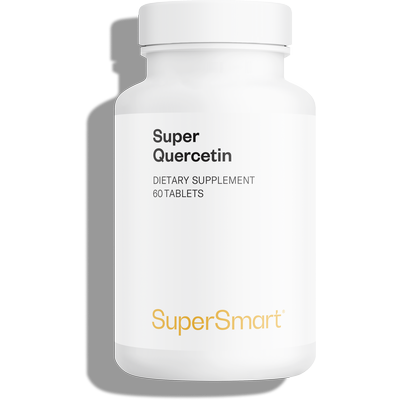
A pure source, optimal concentration and a wider range of properties
www.supersmart.comAll rights reserved
Free
Thank you for visiting our site. Before you go
REGISTER WITHClub SuperSmart
of exclusive benefits:
- Free: our weekly science-based newsletter "Nutranews"
- Special offers for club members only



